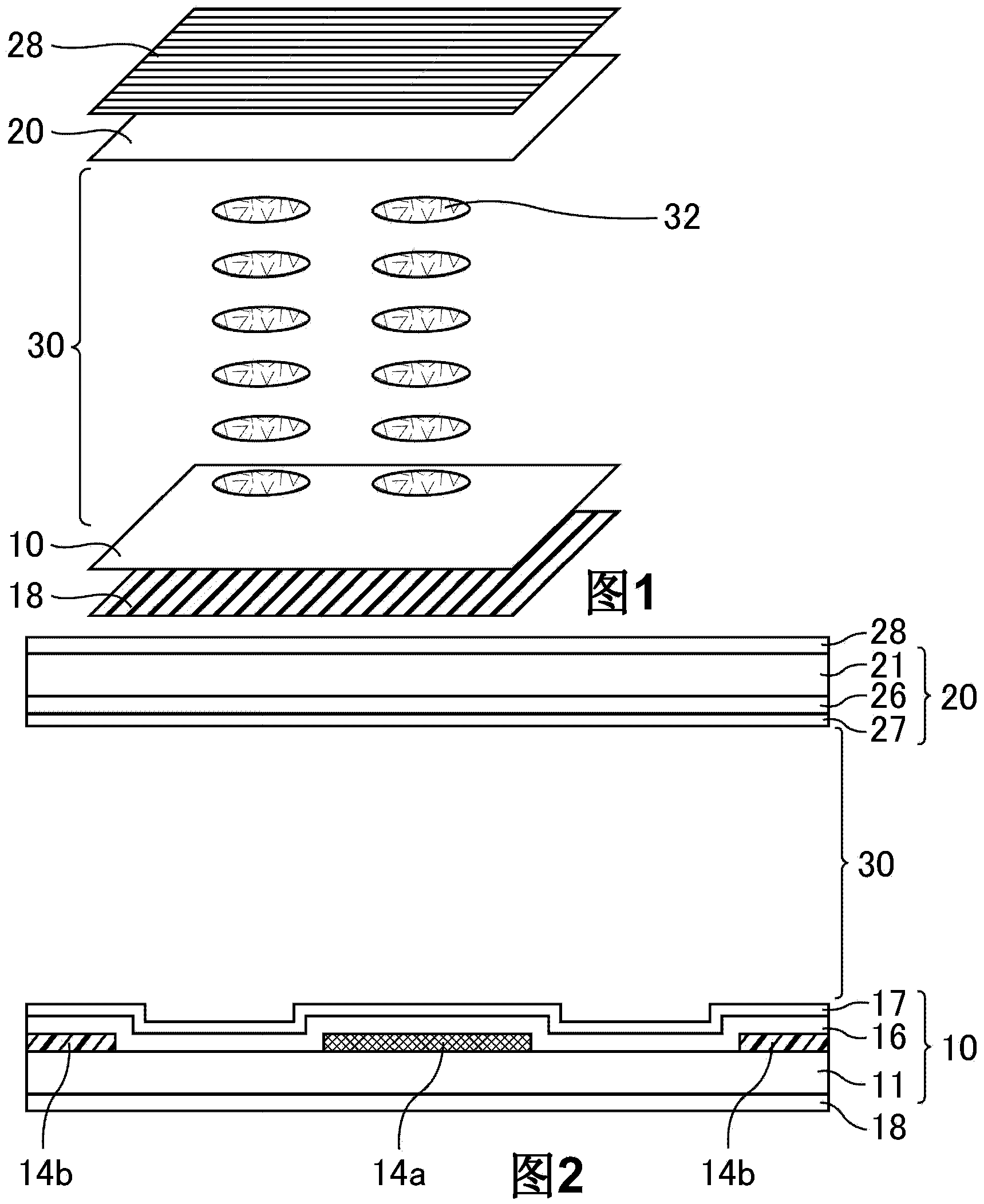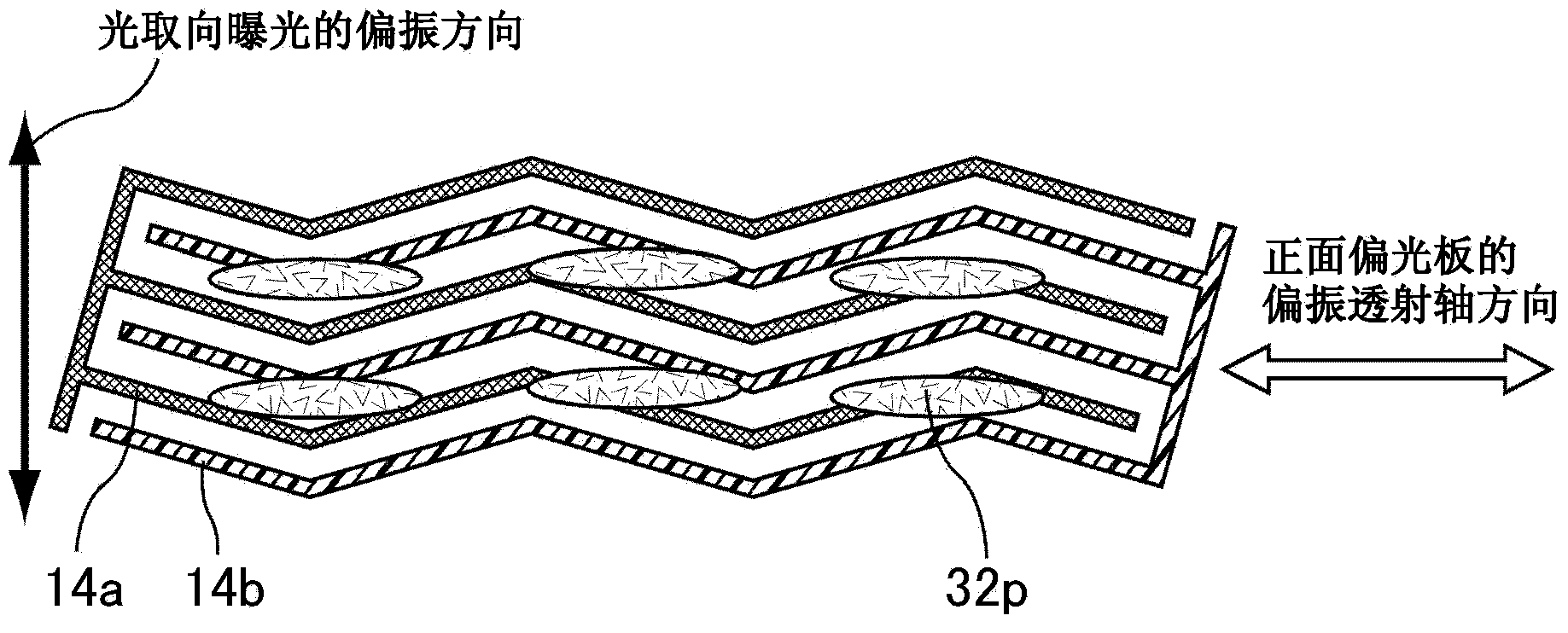Liquid crystal display
A technology of liquid crystal display device and liquid crystal layer, which is applied in the directions of instruments, optics, nonlinear optics, etc., can solve the problem of low transmittance of white display, and achieve the effect of excellent mass production and high yield
- Summary
- Abstract
- Description
- Claims
- Application Information
AI Technical Summary
Problems solved by technology
Method used
Image
Examples
Embodiment approach 1
[0107] Embodiment 1 is a liquid crystal display device in which the polarization transmission axis direction of the polarizing plate on the front side (observation side) is parallel to the liquid crystal alignment direction (initial alignment). The display mode adopts IPS mode. figure 1 It is a schematic perspective view of the liquid crystal display device according to Embodiment 1 when the voltage is lower than the threshold voltage. In the liquid crystal display device according to Embodiment 1, the array substrate 10 , the liquid crystal layer 30 and the color filter substrate 20 are stacked sequentially from the back side of the liquid crystal display device toward the viewing side to form a liquid crystal cell. A rear-side polarizing plate 18 and a front-side polarizing plate 28 are respectively provided on the rear side of the array substrate 10 and the viewing surface side of the color filter substrate 20 .
[0108] exist figure 1 In , the direction of the polariza...
Embodiment 1)
[0122] Prepare a glass substrate (comb-teeth electrode substrate) and a bare glass substrate (counter substrate) having a pair of comb-teeth electrodes as transparent electrodes on the surface, and apply polymer as a material for a horizontal alignment film on each substrate by spin coating. Vinyl cinnamate solution. As the glass of the glass substrate, #1737 (manufactured by Corning Incorporated) was used.
[0123] image 3 It is a schematic plan view showing the irradiation polarization direction, the comb-shaped electrodes, and the liquid crystal alignment direction of the liquid crystal display device according to the first embodiment. A pair of comb electrodes, such as image 3 As shown, the pixel electrode 14a and the common electrode 14b extend approximately parallel to each other, and are each formed in a zigzag shape. As a result, the electric field vector when the electric field is applied is substantially perpendicular to the longitudinal direction of the electro...
Embodiment approach 2
[0159] Embodiment 2 is the same as Embodiment 1, except that the liquid crystal is limited to a preferred embodiment described later.
[0160] The liquid crystal layer included in the liquid crystal display device according to Embodiment 2 includes liquid crystal molecules including multiple bonds other than conjugated double bonds possessed by benzene rings and the like in the molecular structure. Accordingly, PS conversion can be promoted, and as a result, the alignment of liquid crystal molecules can be further stabilized. The above-mentioned liquid crystal molecules may be liquid crystal molecules having positive dielectric constant anisotropy (positive type) or liquid crystal molecules having negative dielectric constant anisotropy (negative type). In addition, in this embodiment, as long as the liquid crystal molecule has a double bond other than the conjugated double bond of the benzene ring, it may have a conjugated double bond of the benzene ring or the like, and this...
PUM
| Property | Measurement | Unit |
|---|---|---|
| thickness | aaaaa | aaaaa |
Abstract
Description
Claims
Application Information
 Login to View More
Login to View More - R&D
- Intellectual Property
- Life Sciences
- Materials
- Tech Scout
- Unparalleled Data Quality
- Higher Quality Content
- 60% Fewer Hallucinations
Browse by: Latest US Patents, China's latest patents, Technical Efficacy Thesaurus, Application Domain, Technology Topic, Popular Technical Reports.
© 2025 PatSnap. All rights reserved.Legal|Privacy policy|Modern Slavery Act Transparency Statement|Sitemap|About US| Contact US: help@patsnap.com



